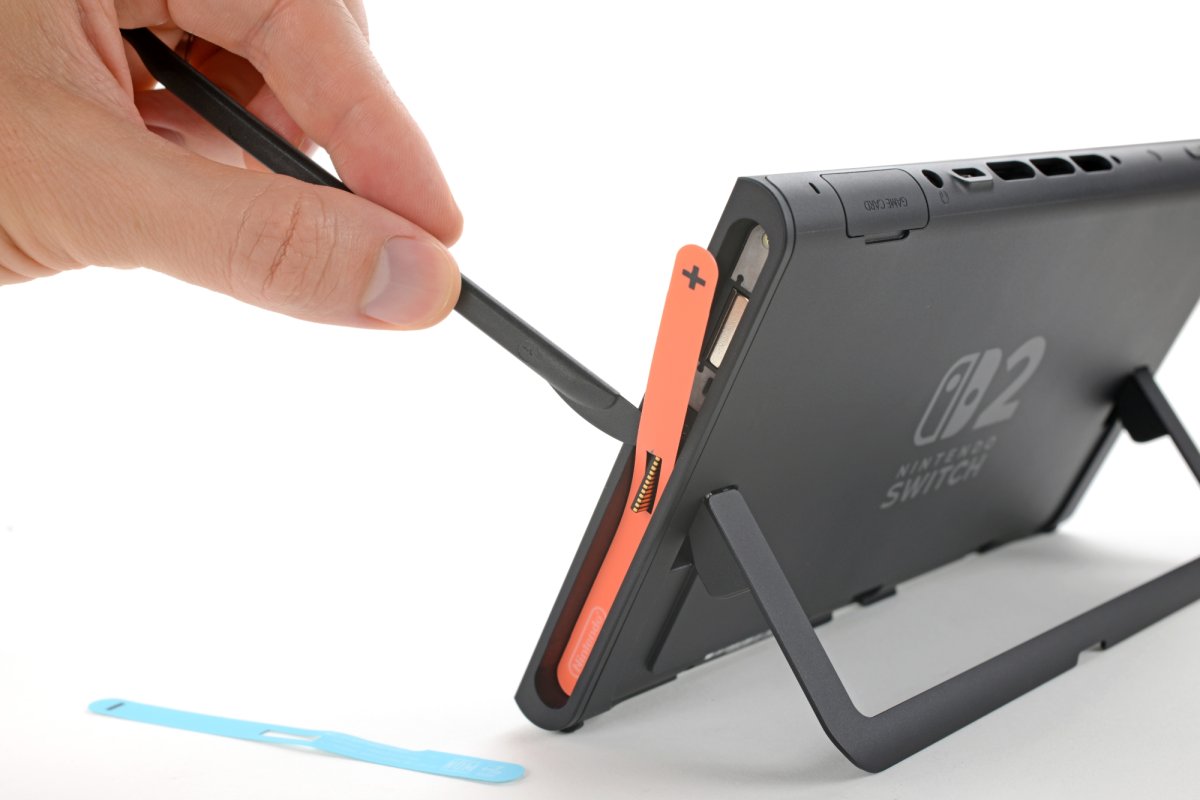The Nintendo Switch 2 is finally here, and while it boasts faster performance, a 120Hz display, and a bump to 256GB of UFS 3.1 storage, iFixit has a harsh reality check for gamers excited to own it long-term. After tearing into the console and its Joy-Cons, the repair experts handed the system a measly 3 out of 10 repairability score. That’s not great news for anyone hoping Nintendo learned from the hardware headaches of the past.
Let’s be honest. Nintendo has a reputation for fighting against repairability, and according to iFixit, that hasn’t changed with the Switch 2. This is still a device built to discourage you from fixing it yourself.
Take the Joy-Cons. Despite Nintendo’s claims that they’ve been “redesigned from the ground up,” iFixit found the same old potentiometer-based joystick technology that has caused drifting issues for years. If you’ve dealt with drifting before, get ready for more of the same. There are no Hall effect or TMR sensors here — just the same wear-prone parts repackaged in a slightly different shell.
Opening the Joy-Cons feels like an intentional puzzle. Sure, you can start with a couple of tri-point screws, but it quickly turns into a tedious guessing game. Hidden screws, glued-on plastic ribs, and a joystick that’s only removable through a risky maneuver make this feel more like a booby trap than a controller.
Moving to the main console, iFixit hoped for better. At first glance, the Switch 2’s metal-heavy build suggests premium quality. But that optimism fades quickly. Underneath the Joy-Con rails are sneaky stickers that hide critical screws. Peel them off, and you’ve already left visible signs the system was opened. That alone could be enough to spook some buyers — even though manufacturers can’t legally void your warranty for opening a device in the U.S.
Inside, it’s not much prettier. The battery is a 19.74 Wh lithium-ion pack, and while that’s a step up from the original Switch, it’s glued down hard. iFixit needed alcohol, a spread of prying tools, and a good dose of patience just to yank it out. The battery’s foam padding didn’t even survive the process. And despite the increase in size, the Switch 2 gets worse runtime than the previous models — as little as 2 hours in some cases, thanks to that fancy display and powerful new chip.
iFixit’s teardown also uncovered more repair red flags. Both USB-C ports are soldered to the board. So is the game card reader. If one of these fails, it’s not just a quick fix. You could be facing a motherboard replacement, and that’s assuming you can even find the parts — which Nintendo hasn’t provided. Not for this model. Not for the last. Not for the Lite. Not for the OLED.
There are some positives. The fan, headphone jack, speakers, and microSD Express card reader are all modular. Buttons sit on independent boards, and some components are held in with normal screws. But iFixit made it clear these wins don’t add up to much if you can’t get replacement parts in the first place. In fact, the lack of official repair support may even run afoul of New York’s Right to Repair law.
Surprisingly, the dock got a better review than the console. It’s spring-loaded, cooled, and cleanly assembled. It connects reliably and handles heat well. According to iFixit, it almost feels like a separate team built it — one that actually considered maintenance.
Still, that doesn’t save the overall package. From joystick drift to glued-down batteries, hidden screws, and soldered ports, the Switch 2 feels like a product built to frustrate anyone who wants to extend its lifespan. And that’s exactly why iFixit gave it such a low score.
For now, the best repairs will still come from third-party parts, detailed guides, and the patience of people willing to fight against Nintendo’s locked-down hardware. And it shouldn’t be that way.


